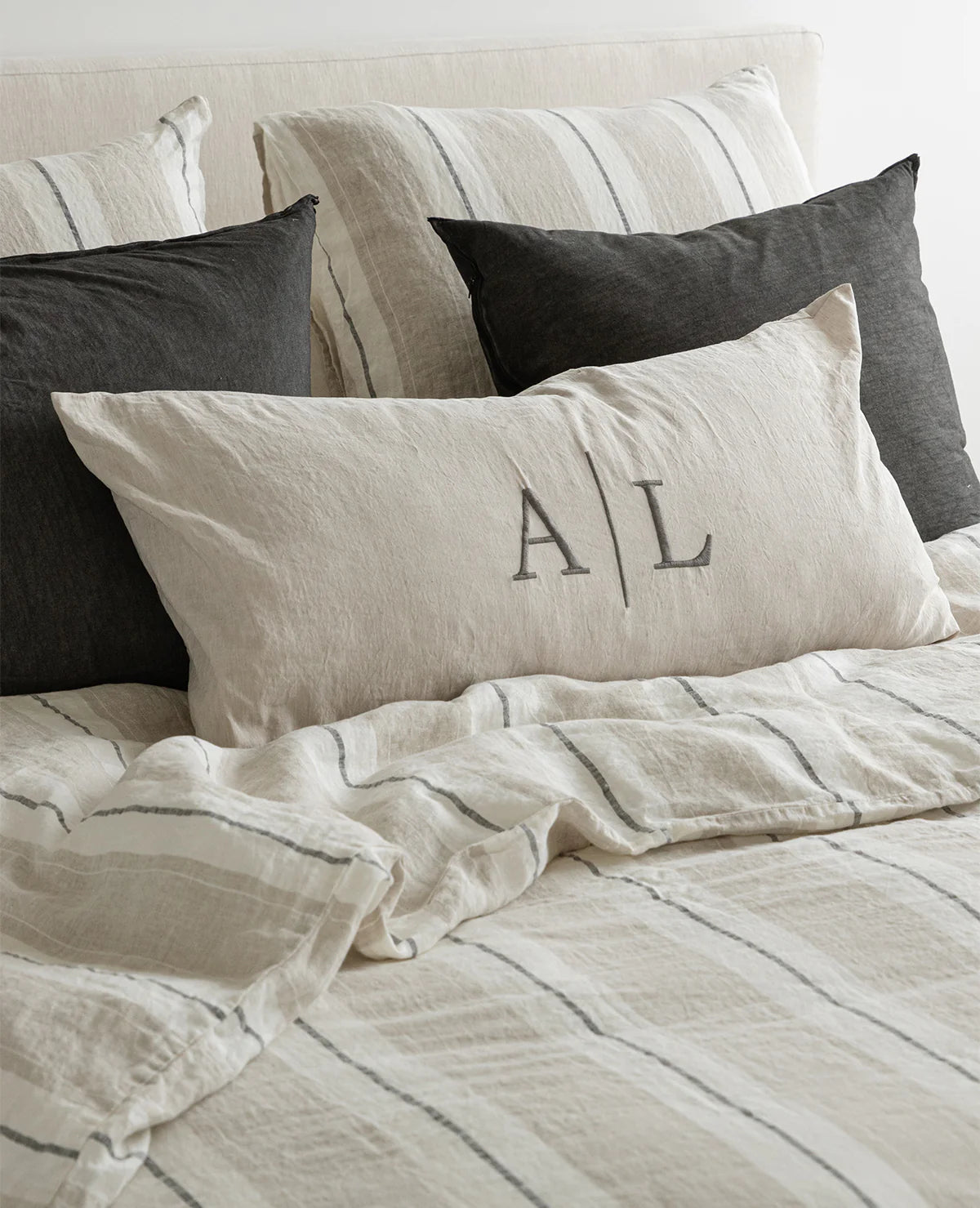Linen sheets are everywhere. It's hard not to open a decor magazine or scroll Pinterest without seeing beds styled with perfectly rumpled linen sheets. It's not hard to see why they're so popular; they're breathable and cooling, naturally hypo-allergenic, and their relaxed, wrinkled charm elevates the look of every bed.
If you just bought linen sheets for the first time, you might have a few questions about how to care for them. We're here to help - we've rounded up some of our most frequently asked questions about using and caring for your linen sheets, and answered them in this helpful guide. With the proper care, you can sleep on and enjoy your linen sheets for years to come.
Is it normal for linen sheets to pill?
Yes! This is not cause for any concern. Some shedding is a completely normal and natural occurrence when you're washing your linen sheets for the first time. In fact, all sheets made from natural fibres will shed during the first few washes, although it's more noticeable with linen (especially if you've bought a darker colour).
So why does this happen? In short - linen fabric is made with hearty fibres derived by the stems of the flax plant - one of the oldest cultivated plants in history. When these fibres are woven together, they result in a strong, durable fabric that's also breathable and naturally sustainable.
While this process results in high-quality sheets that will last for a long time, it also means that any shedding or pilling will be a lot more noticeable. If any small lint balls that remain on the sheets bother you, simply remove them with a fabric shaver or lint roller.
Duet Washed Linen in Skylight/Flax
How to prevent your linen sheets from shedding
Firstly, embrace that some shedding is part of the natural lifecycle of your sheets, and is to be expected for the first few washes. This is part of the process, and the more your linen sheets are washed, the softer they'll become. However, there are some steps you can take to minimize the initial amount of shedding.
For the first few washes, make sure you're washing your linen sheets in cold or tepid water (never hot water), as heat can exacerbate shedding. Adding a 1/2 cup of distilled white vinegar to the rinse cycle can help, as vinegar is a natural softener and clarifier and will help the fabric to shed any clingy or lingering fibres.
We always recommend washing linen bedding on its own. Washing with other fabrics can cause friction on the fabric, which can lead to an increase in pilling and/or shedding.
Washed Linen/Cotton in Clay
The best way to wash your linen sheets
We always recommend washing your sheets in cold or tepid water, with a gentle detergent (Ivory, Sunlight, and Le Blanc are all great options, while Tide is notoriously harsh on natural fabrics). Avoid overloading the washing machine and opt for a longer, slower spin cycle to prevent tangling and wrinkles.
Avoid any unnecessary additives to your laundry cycle, such as bleaches and fabric softeners, all of which can damage natural fibres and contribute to shedding, as well as a host of other issues.

Le Blanc Original Linen Wash
Can I wash my linen sheets in hot water?
We typically don't recommend washing linen sheets in hot water. High heat can damage linen fibres, causing them to shrink and weaken, reducing their lifespan. Stick to washing in cold or tepid water to preserve linen fibres.
If you typically like to wash your sheets in hot water for stain removal, try spot-cleaning rather than washing everything in hot water. We always recommend pre-treating sheets with a gentle stain remover to eliminate stains.
Cabana Linen Dune
Can you put linen sheets in the dryer?
If possible, we always recommend air-drying linen sheets to preserve their integrity and increase their lifespan. However, we recognize that it's not always possible to find the time or space to air dry.
If you do use the dryer, adjust your settings to the air dry cycle (and always use an empty lint trap, which can help to catch any shedding fibres). Heat is abrasive and can damage the fibres of your linen sheets, which will result in an excess of linting/shedding and can shorten the lifespan of your linens.
Eco-Friendly 100% Wool Dryer Balls
Are my linen sheets supposed to be so wrinkly?
YES! Nothing is wrong with your sheets - linen is supposed to be wrinkly! This is one of our most frequently asked questions, and we always encourage our customers to embrace the wrinkles.
In their natural state, linen sheets will always be wrinkled - it's part of their relaxed charm. The only sheets that are naturally wrinkle-free are made from polyester or treated with harsh chemicals. The presence of wrinkles means that your fabric is made from natural fibres - so wear them with pride!
Washed Linen/Cotton Skylight
One tip for helping your sheets to dry smoothly: put them on your bed slightly damp, and smooth wrinkles out with your hands. You'll be shocked at how smooth they can dry this way.
For any remaining stubborn wrinkles, we have a foolproof tip that we use in our store and at photo shoots: spray them with water from a water mister. When the fabric is damp, smooth it out with your hands - the wrinkles will disappear! Works like magic.
Watch a video of our tip in action.
Washed Linen Stripe Flax/Granite
In conclusion, we hope that you found these tips helpful when caring for your new linen sheets. By understanding linen's natural characteristics and life cycle (and sticking to proper washing and care guidelines!), your linen sheets can be used and enjoyed for years to come. We hope your enjoy the many years of temperature-regulating sleep they bring you!












